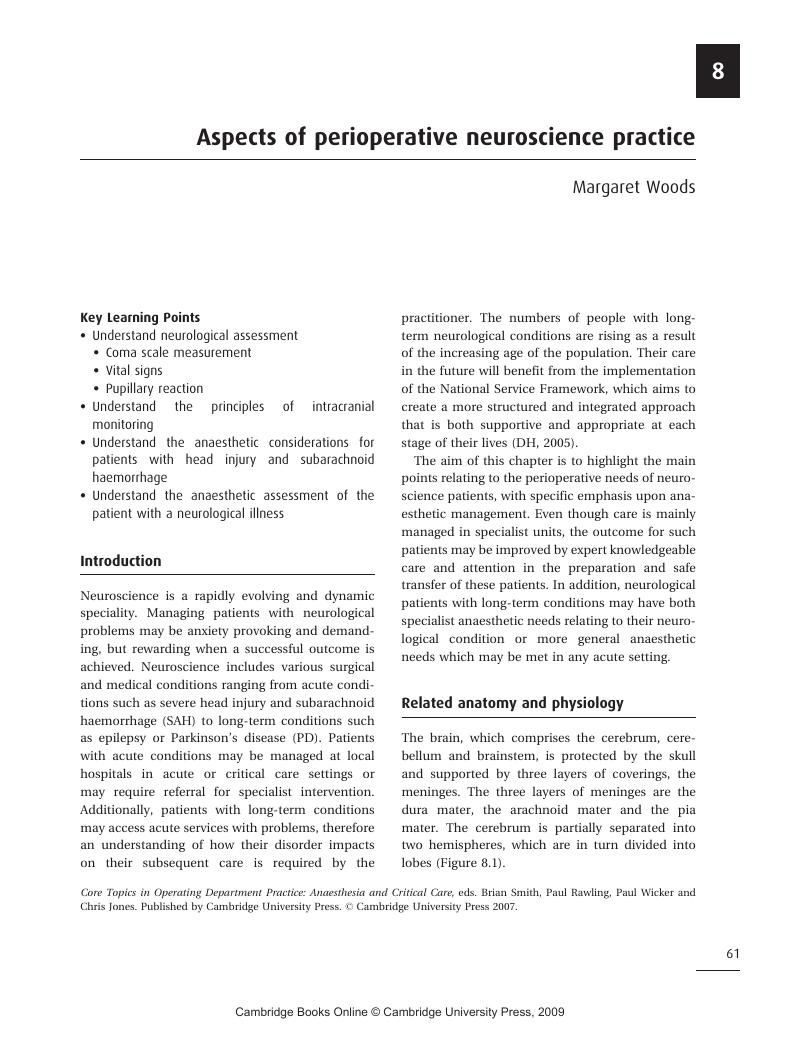Book contents
- Frontmatter
- Contents
- Acknowledgements
- List of Contributors
- Foreword
- Preface
- 1 Introduction: anaesthetic practice. Past and present
- 2 Risk assessment
- 3 ECG monitoring in the recovery area
- 4 The use of cricoid pressure during anaesthesia
- 5 Anaesthetic breathing circuits
- 6 Deflating the endotracheal tube pilot cuff
- 7 How aware are you? Inadvertent awareness under anaesthesia
- 8 Aspects of perioperative neuroscience practice
- 9 Resuscitation
- 10 Intravenous induction versus inhalation induction for general anaesthesia in paediatrics
- 11 Managing difficult intubations
- 12 Obstetric anaesthesia
- 13 Understanding blood gases
- 14 Total intravenous anaesthesia
- 15 Anaesthesia and electro-convulsive therapy
- 16 Mechanical ventilation of the patient
- 17 Perioperative myocardial infarction
- 18 Developing a portfolio
- 19 Accountability in perioperative practice
- Index
- References
8 - Aspects of perioperative neuroscience practice
Published online by Cambridge University Press: 13 August 2009
- Frontmatter
- Contents
- Acknowledgements
- List of Contributors
- Foreword
- Preface
- 1 Introduction: anaesthetic practice. Past and present
- 2 Risk assessment
- 3 ECG monitoring in the recovery area
- 4 The use of cricoid pressure during anaesthesia
- 5 Anaesthetic breathing circuits
- 6 Deflating the endotracheal tube pilot cuff
- 7 How aware are you? Inadvertent awareness under anaesthesia
- 8 Aspects of perioperative neuroscience practice
- 9 Resuscitation
- 10 Intravenous induction versus inhalation induction for general anaesthesia in paediatrics
- 11 Managing difficult intubations
- 12 Obstetric anaesthesia
- 13 Understanding blood gases
- 14 Total intravenous anaesthesia
- 15 Anaesthesia and electro-convulsive therapy
- 16 Mechanical ventilation of the patient
- 17 Perioperative myocardial infarction
- 18 Developing a portfolio
- 19 Accountability in perioperative practice
- Index
- References
Summary

- Type
- Chapter
- Information
- Core Topics in Operating Department PracticeAnaesthesia and Critical Care, pp. 61 - 76Publisher: Cambridge University PressPrint publication year: 2007



